Displacement and Belonging: ‘Like Travelling the World by Being in One Place’ Reflections
New in Ceasefire, Reflections - Posted on Friday, January 30, 2015 11:01 - 0 Comments
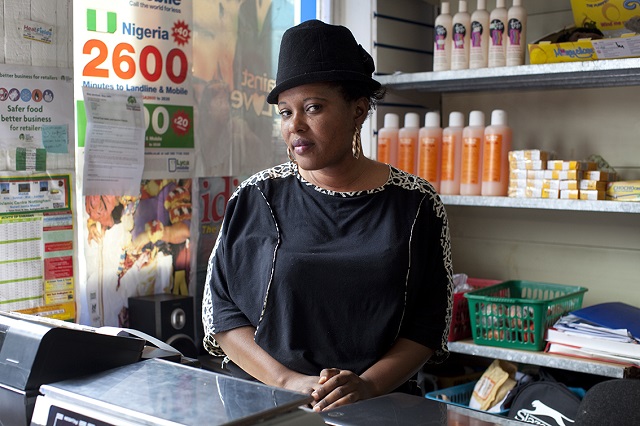
(All photos courtesy of Mahtab Hussain/The New Art Exchange)
MAHTAB HUSSAIN: THE COMMONALITY OF STRANGERS
31 JANUARY 2015 – 12 APRIL 2015
THE NEW ART EXCHANGE
Recently published research by Alex Balch and Ekaterina Balabanova at the University of Liverpool has revealed how UK media coverage of debates about immigration has narrowed considerably in the past five years to such an extent that it is now predominantly negative. Their content analysis of six widely read newspapers ‘also uncovered problems of accuracy, distortion and use of stereotypes in the language used’ (Balch, 2015) [1].
Apart from the negativity, which is perhaps not surprising, what was also apparent from the research was the dehumanised tone of these media narratives. Mahtab Hussain’s exhibition at the New Art Exchange in Nottingham, ‘The Commonality of Strangers’, a series of 70 photographs and interviews carried out with people from the diverse community of Hyson Green, Nottingham, is not designed as a corrective to these increasingly negative media representations, but what the exhibition does is to present other ways of telling and, in the process, humanises the migrant story.
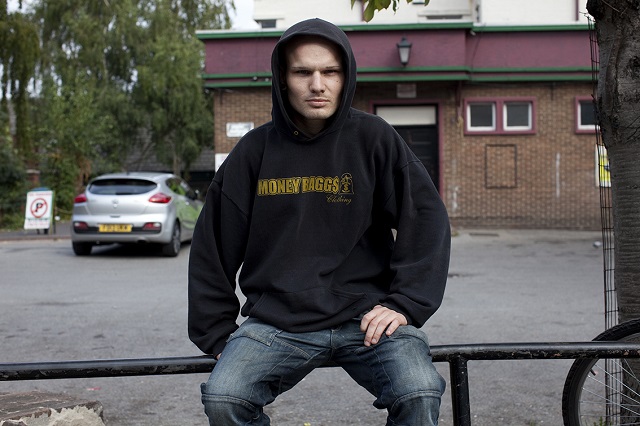 It has been claimed that migration was the quintessential experience of the twentieth century and there is every indication that this will be no less true of the twenty first. Conflicts in Iraq and Afghanistan, Syria, Eritrea, Sudan, the Congo, Somalia, and elsewhere, together with ecological disasters, political and religious oppression, and deepening global inequalities have produced one of the largest displacement of peoples since the Second World War and generated an ever-increasing number of refugees, mostly in the Third World itself but also in the USA and Europe.
It has been claimed that migration was the quintessential experience of the twentieth century and there is every indication that this will be no less true of the twenty first. Conflicts in Iraq and Afghanistan, Syria, Eritrea, Sudan, the Congo, Somalia, and elsewhere, together with ecological disasters, political and religious oppression, and deepening global inequalities have produced one of the largest displacement of peoples since the Second World War and generated an ever-increasing number of refugees, mostly in the Third World itself but also in the USA and Europe.
A number, after unimaginable hardships and journeys fraught with constant danger, have made their way to the Hyson Green suburb of Nottingham, UK. Those forced into migration by wars and civil conflicts, some the product of Western (including British) ‘intervention’, now live alongside others who have elected to migrate in the past decade since the EU opened up its internal borders; although the Roma people from Eastern and Central Europe also speak of oppression and racism in their countries of origin and how they feel safer here.
Migration to Nottingham is hardly a new phenomenon. There is evidence of Jewish communities in medieval times, black people living in the city since the eighteenth century, and a fairly substantial influx of Irish immigrants in the early and mid-nineteenth century. The latter, in particular, faced considerable prejudice and hostility, as did the African-Caribbean and Asian communities which emigrated here in the 1950s and 1960s.
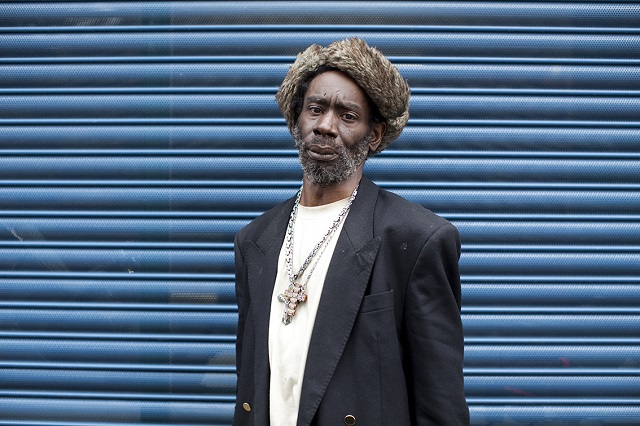 Despite claims that Britain has a long and proud tradition of offering asylum to those fleeing oppression, this does not always square with the evidence. As a Prime Minister said at the beginning of the twentieth century, we only tend to give asylum to those we agree with. Hostility to migrants takes different forms: anti-Catholicism was a feature of the prejudice towards the Irish, the colonial legacy of racism part of the hostility towards Commonwealth immigrants fifty or more years ago, and, recently, an anxious and populist nationalism is heating differences into significance.
Despite claims that Britain has a long and proud tradition of offering asylum to those fleeing oppression, this does not always square with the evidence. As a Prime Minister said at the beginning of the twentieth century, we only tend to give asylum to those we agree with. Hostility to migrants takes different forms: anti-Catholicism was a feature of the prejudice towards the Irish, the colonial legacy of racism part of the hostility towards Commonwealth immigrants fifty or more years ago, and, recently, an anxious and populist nationalism is heating differences into significance.
What this prejudice shares in common is a similar deployment of derogatory usages, such as references to ‘floods’ of immigrants ‘swamping’ our culture, foreign parasites, or to migrants bringing diseases into the country, as well as the repeated refrain of their taking jobs and houses from ‘our own’.
Walking through many high street areas in Britain today can be a depressing experience which underlines the toll exacted by neoliberal policies of enforced austerity. The multinational chains have usurped the spaces of the local, leaving in their wake boarded-up premises, charity shops, and high interest-charging loan outlets. Hyson Green, however, is an exception to this trend. Take a stroll around the main retail centres and you will come across shops and businesses which have made the area the fastest GDP growth in Nottingham. Once seen only in terms of negative images, Hyson Green is now a complex social, ethnic and cultural space with a range of dynamic, independent, multicultural shops.
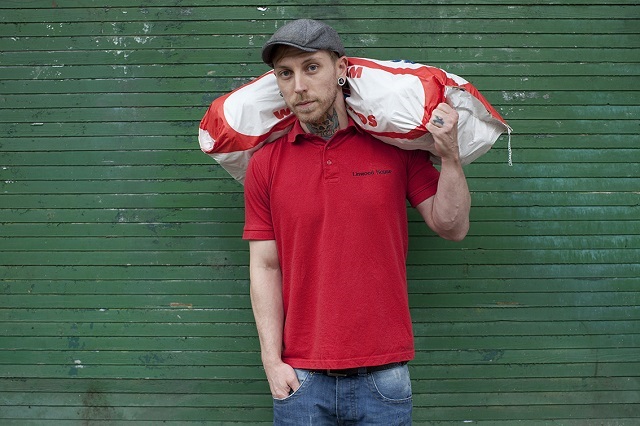 In the past decade, a thriving local economy has developed with a global accent, offering food, clothes and other goods from Pakistan, Russia, Iran, Eastern Europe (Poland in particular), West and Southern Africa, India, and the Middle East. Alongside this development has been the growth of diverse arts, cultural and sporting organisations which reflect both ethnic specific and multicultural interests. The introduction of a tramway line has helped to make this the most popular shopping area outside the city centre.
In the past decade, a thriving local economy has developed with a global accent, offering food, clothes and other goods from Pakistan, Russia, Iran, Eastern Europe (Poland in particular), West and Southern Africa, India, and the Middle East. Alongside this development has been the growth of diverse arts, cultural and sporting organisations which reflect both ethnic specific and multicultural interests. The introduction of a tramway line has helped to make this the most popular shopping area outside the city centre.
The people in Mahtab Hussain’s portraits and interviews reflect this local energy and enterprise, as does the range of primary schools in the area with their rich mix of nationalities and languages, where 80% or more of the children speak English as an additional language. However different each person is in the portraits, and wherever they are from ‘originally’, almost all testify to the importance of education in the lives of their children, the main source and resource of their future belonging in this country, even if regret if also expressed at the possible loss of cultures of origin.
Given that we are just a few months away from what could be the most bitter and divisive general election for decades, the positive images which emerge from this exhibition and community are evidence that given time, space and opportunity, immigration can breath vitality into any area.
 At the same time, it is important to stress that the exhibition does not attempt to produce a romanticised or sentimental version of Hyson Green, as there are instances of loss and loneliness, alienation and unbelonging, as well as of tension, conflict and racism.
At the same time, it is important to stress that the exhibition does not attempt to produce a romanticised or sentimental version of Hyson Green, as there are instances of loss and loneliness, alienation and unbelonging, as well as of tension, conflict and racism.
Not always articulated but nevertheless tangibly present in the background, is the fact that some people were in flight from fear and insecurity and that lives were risked in making the journey to relative safety.
It is a commonplace to speak of the ‘myth of return’ as part of many first generation migrant experiences, and most do express a longing to go back to a place they call ‘home’. But a good number also speak of Hyson Green as home now, particularly those born here. The portraits of people in their homes give a strong sense of embeddedness, and for those driven from their homelands, a feeling of anchorage is conveyed.
An enemy, it has been said, is someone whose story you have not yet heard, and the importance of the images and words in the exhibition is that voices are being found, stories being told. For many, this may be the first time that anyone has ever asked them to put themselves and their experience at the centre of their lives, to be the subjects of their own story. There is a pride displayed in being part of both Hyson Green and, simultaneously, of a particular cultural belonging, manifested in the distinctive clothing worn by many.
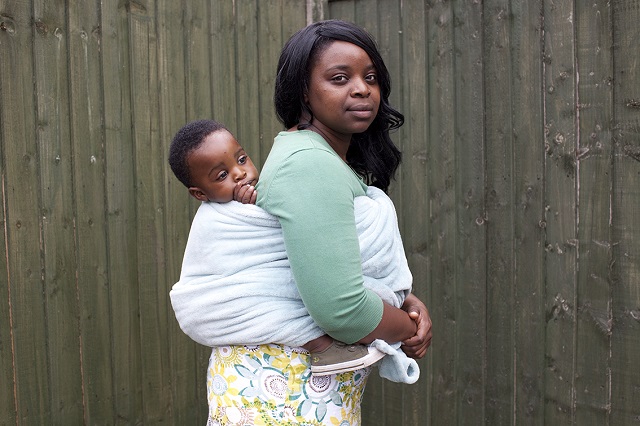 It has been said that to be unable to narrate is to fall out of time and space, and each of the figures presented in the portraits is situated firmly in space and time (the prominent brickwork emphasising this) and is also a carrier of stories, their own interleaved with others; stories which unfold and add layers in the context of their telling, to a point where each person becomes identifiable, a subject of value, rather than an ‘immigrant’ or a ‘native’.
It has been said that to be unable to narrate is to fall out of time and space, and each of the figures presented in the portraits is situated firmly in space and time (the prominent brickwork emphasising this) and is also a carrier of stories, their own interleaved with others; stories which unfold and add layers in the context of their telling, to a point where each person becomes identifiable, a subject of value, rather than an ‘immigrant’ or a ‘native’.
The very fact of their being storied is itself an act of witnessing something other than that which already forms the basis of existing media, or political, representations, objects of the narratives of others. People are shown interpreting and making sense of their own experience and locality, claiming their own agency and empowerment. The camera is there as an enabling strategy for this.
Despite the clamour of populist voices in politics and the media, ours has been called ‘the era of integration’, although not without stresses and strains, and the exhibition reflects this to a limited extent, however tentative it might still be. If integration is seen, ideally, as a series of options, rather than prescriptions of belonging, then these portraits embody the various stages that such options involve, from an initial ‘learning the ropes’ of a new society to finding a way round housing, work, education, health and language, a journey which enhances the possibilities of choice and agency, of forms of belonging which, moreover, do not, and should not, exclude other ways of belonging and choice, of a more separate and detached nature (meanings and values, tastes, beliefs, language use, etc.) as long as these do not impact negatively upon the possibility of living a meaningful public life.
 What comes through these stories is, in some cases, a desire to preserve a language of origin, food habits, family structures, modes of dress and cultural practices as primary signifiers of identity, even if possible sources of inter-generational and cross-cultural conflict, but also of many examples of negotiation, adaptation and compromise, the markers of a secondary and public identity. This is recognition, grudging at times, that being here and now has to take priority over being there and then, and that belonging is not fixed but always under construction.
What comes through these stories is, in some cases, a desire to preserve a language of origin, food habits, family structures, modes of dress and cultural practices as primary signifiers of identity, even if possible sources of inter-generational and cross-cultural conflict, but also of many examples of negotiation, adaptation and compromise, the markers of a secondary and public identity. This is recognition, grudging at times, that being here and now has to take priority over being there and then, and that belonging is not fixed but always under construction.
At home, at work, at play, alone and together, these portraits live out, bear witness to, this process of construction, even if, as yet, the evidence suggests an, at times, uneasy and somewhat passive co-existence of different groups rather than community cohesion as such..
Hard work has long been associated with migrant experience, despite the braying voices to the contrary, and this is repeated throughout the interviews to such an extent that it almost becomes a mantra.
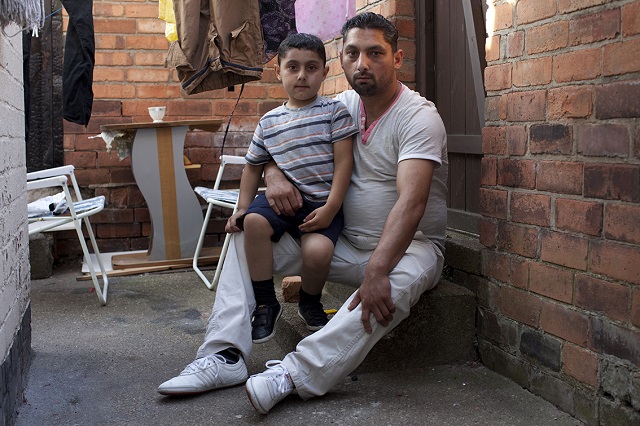 Frequently, it is acknowledged that the work that is/was found is not always compatible with hopes, ambition, or qualifications but the willingness and need to work hard is unwavering, mainly because of another repeated refrain – the commitment to family, and the hope that your children will achieve their dreams, even if yours remain unfulfilled. Most favour sending their children to the local, ethnically-mixed schools where it is hoped they will grow up with a strong sense of their identity in a locality but also with an awareness of a global future.
Frequently, it is acknowledged that the work that is/was found is not always compatible with hopes, ambition, or qualifications but the willingness and need to work hard is unwavering, mainly because of another repeated refrain – the commitment to family, and the hope that your children will achieve their dreams, even if yours remain unfulfilled. Most favour sending their children to the local, ethnically-mixed schools where it is hoped they will grow up with a strong sense of their identity in a locality but also with an awareness of a global future.
The majority of the population in the area is white British and there are no ghettoes in Hyson Green even if some parts retain traces of cultural particularity, as older people may feel more at home in places which remind them of where they came from, and some long-term residents express a nostalgia for former traces of community, like the disappearance of pubs, while admitting that the area has improved dramatically in recent years.
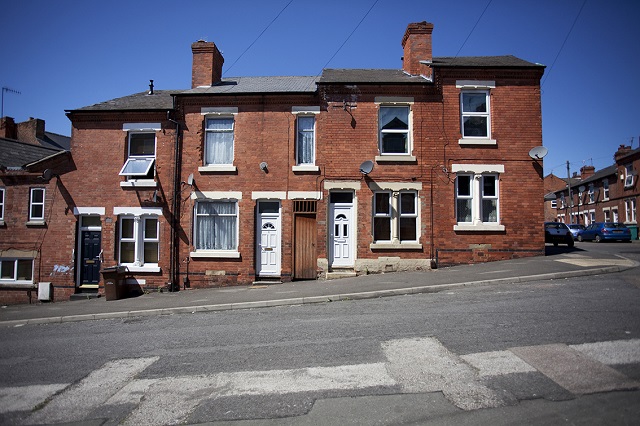 Such contradictory views are quite common in many places. The younger generation, however, speak of relative mobility, of multi-ethnic friendships, of mixed marriages. Integration, as has been said, is a two-way street and belonging is not a given but is shaped out of points of intersection, mutuality and commonality. Like ‘community’, it does not really exist until it is called into being by challenge, encounter, questioning. There is poverty and unemployment (slightly higher than the city average), there are gangs, and integration is still very uneven, with some groups seen as keeping very much to themselves.
Such contradictory views are quite common in many places. The younger generation, however, speak of relative mobility, of multi-ethnic friendships, of mixed marriages. Integration, as has been said, is a two-way street and belonging is not a given but is shaped out of points of intersection, mutuality and commonality. Like ‘community’, it does not really exist until it is called into being by challenge, encounter, questioning. There is poverty and unemployment (slightly higher than the city average), there are gangs, and integration is still very uneven, with some groups seen as keeping very much to themselves.
What the exhibition demonstrates, however, is the challenges, the encounters, the questionings faced by these ‘strangers’ (to the area, to themselves sometimes, to others) – who are we? how do we live? what do we do? – and the kinds of answers, always provisional and incomplete, which they come up with in their everyday lives. In this way, the images and interviews give flesh and body to the kind of profile which a census might produce, except that it is a living, visual, speaking census of strong social networks, long-term, and not always welcome, cultural change and transition, diversification, and the desire to confront existing disadvantages and lingering negative images.
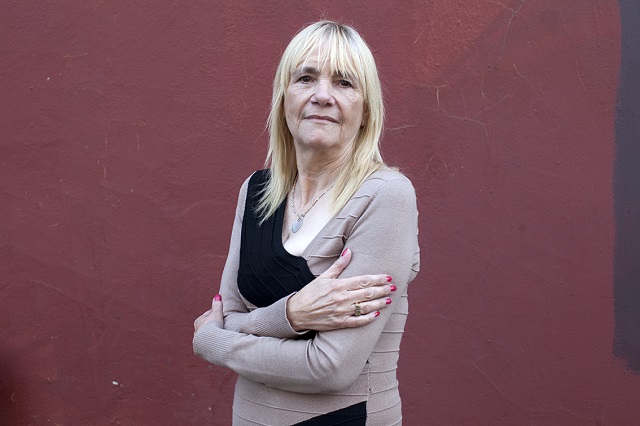
Hyson Green emerges from this exhibition as a place suffused with multiple, often contradictory, identities and allegiances, with people living in, and between, a number of cultures and languages. As is often the case, the portraits sometimes show how first generation migrants inhabit a ‘homeland of the mind’, or ‘imaginary homelands’, as Salman Rushdie called them, in which the place of origin is reproduced in a range of mnemonic forms, images, maps, and objects: it is past-oriented, referenced to/by loss, frames of displacement.
Items in the home, modes of traditional dress, and images reflect this attempt to reclaim and perpetuate that which was left behind. The exhibition documents these idioms of distinctiveness but suggests that they might also be indicators of potential continuity and transformation, as they are mixed eclectically with new sources and resources of current identity.
Seen in this way, the exhibition becomes a form of translation and decoding, producing frames of replacement. As Salman Rushdie says at one point: ‘It is normally supposed that something gets lost in translation. I cling, obstinately, to the notion that something can always be gained’ (Rushdie, 1991) [2]. To varying degrees, and almost without exception, the people in the exhibition are testimony to this. Even those who declare an intention to return to their birthplace at some time will go back having gained something in translation.
 As the May General Election approaches, this exhibition reminds us that belonging is a set of alliances and allegiances and not something that can be defined in terms of ancestral claims, skin colour, and packaged territorial boundaries. It is situated and contingent, mediated daily through the lived experiences of individuals and communities:
As the May General Election approaches, this exhibition reminds us that belonging is a set of alliances and allegiances and not something that can be defined in terms of ancestral claims, skin colour, and packaged territorial boundaries. It is situated and contingent, mediated daily through the lived experiences of individuals and communities:
I have crossed an ocean
I have lost my tongue
from the root of the old one
a new one has sprung
Grace Nichols, The Fat Black Woman’s Poems, 1984
The exhibition launches this evening, 30 January 2015. For more info please visit the NAE website.
Footnotes:
[1] Alex Balch, ‘Hard Evidence: how has press coverage of immigration changed?’, The Conversation, 21 January, 2015
[2] Salman Rushdie, Imaginary Homelands: Essays and Criticism, 1981-1991, Penguin Books, 1991, p. 17.



Leave a Reply